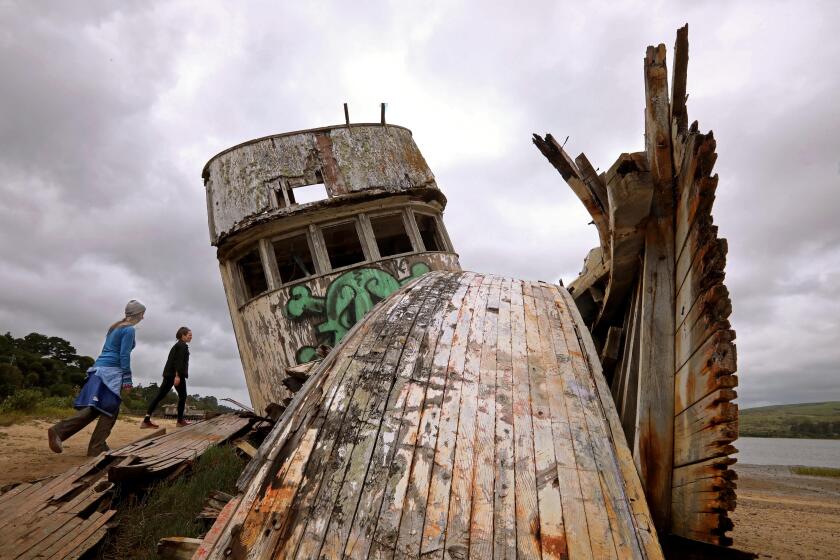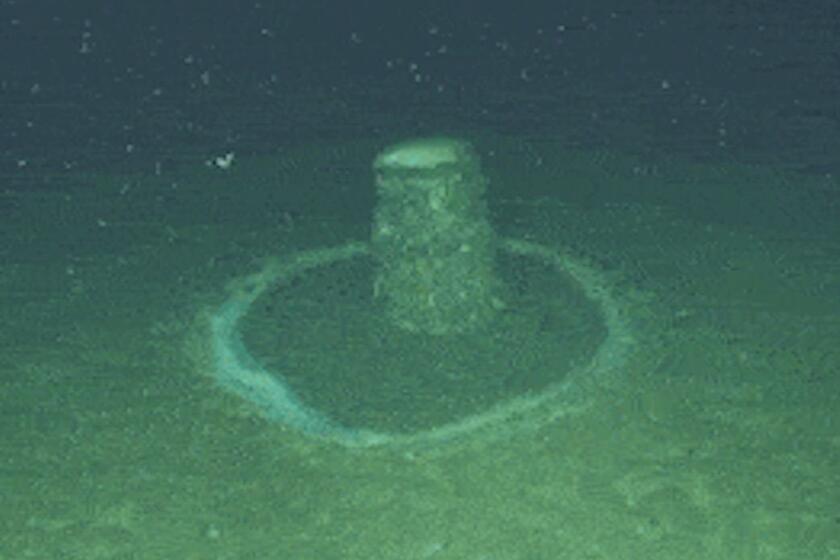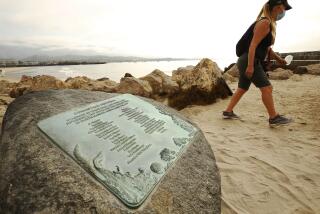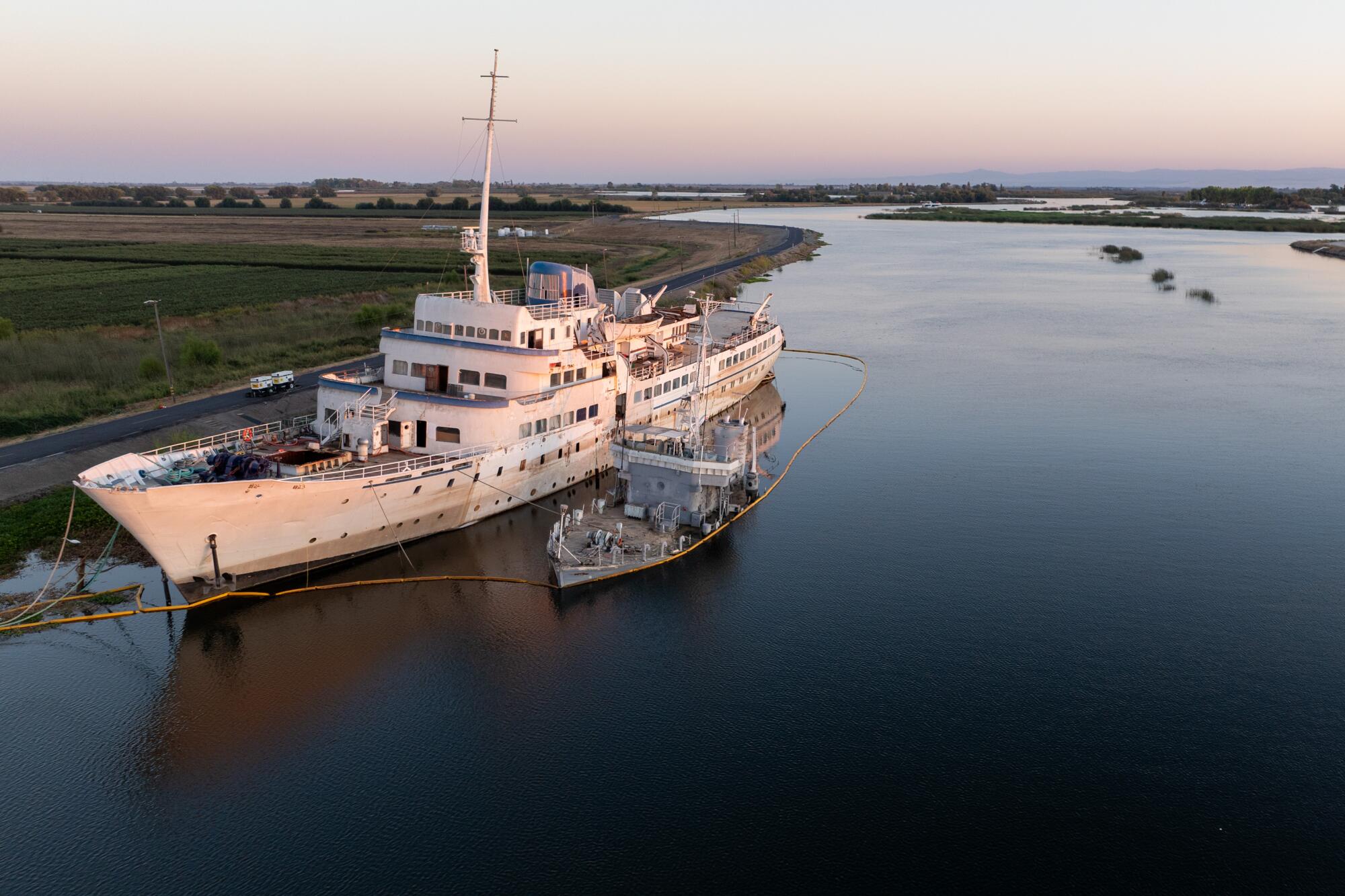
LITTLE POTATO SLOUGH, Calif. — Under a nearly full moon at the end of May, a 70-year-old cruise ship with a wild and enigmatic history sank in a lonely back channel in California’s Sacramento-San Joaquin Delta. In the months since, the recriminations and finger-pointing have risen like an angry tide.
The sad end of the MS Aurora is a familiar story in the Delta’s marshy sloughs. Boats of all kinds routinely get dumped here like so much trash. Battered by time and weather, they seep oil and other hazards, infuriating local officials and jeopardizing wildlife and the tens of millions of people who rely on Delta water for drinking and agriculture.
But the Aurora is no ordinary boat. She was a German liner, then a cruise ship plying the Grecian isles and the West Coast of North America, then an unsanctioned floating homeless shelter and drug den, turning up as a vessel non grata in several of California’s big cities. And, of course, she was a Hollywood star. She appeared in the James Bond movie “From Russia With Love,” and was part of the real-life inspiration for the TV show “The Love Boat.”
Later in life, she was a YouTube star in her own right, after a software developer bought her on Craigslist and — seeking funds to rehabilitate her — began documenting her transformation on social media.

The story of how the Aurora wound up here, decayed and posing a threat to Stockton’s drinking water supply, is a tale emblematic of California’s Delta. The estuary at the head of San Francisco Bay provides fresh water to two-thirds of the state. But it is also a world unto itself, its winding channels home to fifth-generation farm families, solitary fishermen, houseboaters and artists living off the grid — and its delicate ecosystem under constant threat from a variety of assaults, not the least of which are abandoned boats and their toxic spew.
The Aurora’s demise is the saga, too, of the broken dreams of a long line of men who have been bewitched by this ship. They include Chris Willson, the most recent owner willing to be publicly identified. Willson says he sold the boat last fall to a buyer who doesn’t want his name disclosed, after finally accepting, with a crushing thud, that his vision for a resurrected Aurora would never come to fruition.
“I’m heartbroken,” said Peter Knego, a cruise ship historian who has been besotted with the Aurora since he first glimpsed her as a teenager in the 1970s. After she went down on the night of May 22, questions about the circumstances of her downfall have grown more intense. “It’s all very strange,” Knego said, an unsettling storyline wrapped in “all this nefarious dark stuff.”
Among the mysteries: Who actually owns the ship? Why did she sink? Who should be held responsible? And what on earth should happen to the ship now that she has been “refloated” and sits hobbled less than a mile from Stockton’s drinking water intake?
Stockton’s community relations officer, Connie Cochran, whose financially struggling city is paying to keep the Aurora refloated, has no patience for people enamored of the boat’s romantic past. “There’s no love here,” she quipped.
U.S. Rep. Josh Harder (D-Tracy), who was on the scene as the Coast Guard tried to contain oil leaking from the Aurora last spring, said the sinking ship, on top of another one that went down in the same spot last year, was the last straw. Bemoaning “abandoned boats all up and down the Delta,” he recently introduced legislation that would require owners of big boats to have more insurance and more liability.
For Willson, the fault lies with small-minded governance. He says that he felt beaten down by various local authorities for years before making the heart-wrenching decision to sell the Aurora in October 2023 to the secretive buyer, and that their bureaucracy and lack of vision all but sealed her fate.
“I came there to do something good for the ship, to save a pretty valuable piece of history in my opinion,” Willson said. “Luck would have it that I got stuck in Stockton.”

The story of the MS Aurora starts in 1955 in a shipyard in Hamburg, Germany, where she was christened the Wappen von Hamburg, the first “significant” passenger ship built in Germany after the wreckage of World War II, according to a history compiled by Knego. Her graceful lines stretched nearly 300 feet stem to stern. On her maiden voyage she carried 1,600 guests, who could relish the views from well-appointed staterooms and salons on three towering decks.
After cruising the North Sea for a few years, the vessel was moved south to Greece, and got a new name, the Delos, and a new distinction: She became one of the first modern ships to bring cruising to the Aegean Sea.
By the late 1960s the vessel had been sold again and crossed an ocean to become a cruise ship on America’s West Coast, sailing under the names Pacific Star and Polar Star.
In this era, the ship acquired an employee who would guarantee her place in history. Jeraldine Saunders was a fashion model and astrology aficionado who got a job working as a cruise director.
“You cannot imagine the things that happen on cruise ships,” she told The Times in 1972. “The sex lives of the officers, deaths, suicides, marriages, romances, nymphomaniacs … I realize that what all people are looking for is love. The world revolves around love.”

From various ports of call, Saunders wrote vivid letters to her family about life at sea, some of which her mother passed along to a literary agent. In 1974, Saunders published a memoir, “Love Boats,” about her time aboard various ships. It was optioned by producer Aaron Spelling, who used it as the basis for “The Love Boat,” one of the most popular programs on TV in the 1970s and ‘80s. Saunders, who died in 2019 at age 95, liked to take credit for the subsequent explosion in the cruise ship industry.
The boat that helped start it all, however, faced rough seas ahead.
In the early 1970s, the Aurora had a brief spell as a floating treasure trove, after an owner named Donald Ferguson bought her, dubbed her the Xanadu and filled her with precious Asian antiques that passengers could admire during cruises. But by 1977, the ship was laid up in the Port of Seattle, stripped of some of her treasure.
From there, things took a darker turn. In December 1984, the local newspaper in Coos Bay, Ore., reported that a “graceful cruise ship” had run into trouble off the Oregon coast and been towed into the fishing village on orders of the Coast Guard. The Coast Guard said the boat had been headed for Los Angeles, but her owner refused to provide any information, including his name. “Everything about her is copyrighted,” the paper quoted him as saying. “No newspapers can print any stories.”
It took more than that to scare the editors of the Coos Bay World, which reported a number of facts about the once-luxurious boat, including that she had recently been “used as a floating camp for workers” laboring in fish-processing plants in Dutch Harbor, Alaska. The ship eventually was towed south to Los Angeles.

Knego, the historian, vividly remembers the day the ship came back into his life. It was the summer of 1989 and he was on a boat in the Port of Long Beach with some friends to celebrate the Fourth of July. He looked out on the water and did a double take.
“Oh my God, I know that ship,” he told his companions. Knego had been a 15-year-old obsessed with ships when he saw her in the Port of Los Angeles in the 1970s, still regal and gleaming.
And now he was a college graduate working in the music business, years away from launching a business to sell artwork and vintage furniture salvaged from old ships, but already a ship expert. It seemed a quirk of fate that one of the ships that had piqued his interest in nautical luxury had found her way back in Los Angeles, even if she did look quite worse for the wear.
It turned out the ship had a new name and a new mission. In the early 1990s, the vessel had been sold to a religious group and renamed the Faithful. The owners said she would become a Christian relief ship, sailing into ports of trouble to provide succor, according to local news reports and Knego’s research.
It never happened. Instead, scores of squatters, many of them devout and destitute, took up residence, Knego said.
That’s information he would dig up later. All he knew that summer was that he was desperate to get on the boat. He had heard about the priceless Asian antiques a previous owner had purchased; he had read the “Love Boats” stories, and remained as entranced as he had been as a child.
But the mysterious religious group would not return his calls. He rented a boat and tried to approach her by sea, only to be told to go away.
Even from shore, he could tell something strange was going on. He could see that people were living on the ship, hanging their laundry, moving around the deck. But if they noticed anyone looking at them, they took cover inside.
Eventually, he said, the Coast Guard got wise to the situation. The people aboard were evicted, and the ship was sold yet again. That owner at last allowed Knego onto the boat, where he promptly bought some of the precious art, taking the vessel’s watchman to an ATM to do the deal in cash, Knego said.

In 2005, officials in L.A. County finally rid themselves of the vessel. The ship was towed to the Port of Alameda. Again, plans for her revival — which had something to do with turning her back into a luxury yacht — quickly fell apart.
The ship became a drug den, according to Alameda officials and city documents, as well as a floating homeless shelter. The boat “has kind of a bad reputation,” then-development services director Leslie Little told the East Bay Times in 2016.
By then, the ship’s ownership was murky. A city chronology of efforts to move the vessel out of the port shows officials struggled to reach anyone who would take responsibility for the ship or pay them for berthing fees.
So, Alameda officials tried to find someone who would just take the ship away. They had the value assessed and were told the vessel was worth less than $2,000 and could be worth negative dollars because scrapping her would be so expensive.
City officials declared her an abandoned vessel, and in 2008 paid a man named Curt Lind $200,000 to get the ship out of Alameda.
By 2008, at the time he collected nearly a quarter of a million dollars from Alameda to get rid of its problem, Lind was already quite a colorful character. And this was before three assailants stabbed him with a samurai sword and he left two of those assailants wounded and the other one dead. That wouldn’t happen until 2022, when Lind was 80.
Lind had spent decades buying and selling old boats, trying to make a living off floating pieces of history. He lived aboard a boat called the Robert Gray, a 1932 Army Corps survey vessel. At one time he also owned the Fir, a Coast Guard lighthouse tender from 1936.
“It’s a sickness,” Lind, now 82, said of his love for old ships, “a sickness that a lot of men get.”
The MS Faithful, as the Aurora was then called, was a much grander affair, and even more expensive to contemplate fixing.
The S.S. Point Reyes, long ago abandoned at the edge of Tomales Bay, has been loved and abused by decades of visitors. And its days appear to be numbered.
Lind had her towed into the Delta, to a spot near Decker Island where a friend owned some land. The idea, maybe, was to take some of the money from the city of Alameda and turn her into a floating restaurant.
But within months of getting the ship to the Delta, Lind was in hot water with the California State Lands Commission, which has jurisdiction over California’s rivers. The commission determined that the ship was moored illegally. The commission’s staff report also noted that the ship was sitting next to another ailing vessel, an old ferryboat called the San Diego, whose owner had docked her near the Delta town of Antioch in the 1980s with plans to create a floating dinner theater. Instead, like so many other boats, the San Diego had been abandoned.
The commission told Lind to move the Faithful. But Lind recalled that she was “just getting too much for me to take care of, so I just decided, you know, to get rid” of her.
He opened his computer, and listed the MS Faithful for sale on Craigslist.

In August 2008, Willson, a software developer in Santa Cruz, saw the ad.
Willson, then 36, reached out to Lind. His intention, he said, was actually not to buy the ship but to film her and use the footage to show off “virtual tour” software he was developing.
After all, he wasn’t a boat guy. Or so he thought. “It was as if this ship had a magnetic pull on me,” he later wrote in a history of his first few years with the ship.
Shortly thereafter, he found himself in the Delta, staring at the derelict vessel. He was, he wrote later, appalled: “The ship had the look of an abandoned, forlorn homeless encampment, left to decay for years.” Trash littered the interior. The walls were scrawled with graffiti. And the floors? They were coated in excrement from the caretaker’s dog. The stench was so rank, Willson recalled, he could barely breathe.
And yet, the ship cast a spell. “It was almost as if I could see visions of the lively crowds” that had once filled the boat with hope and romance.
A short time later, he spent a night on board, hearing “noises and voices that were not really there … much like sleeping in a giant haunted house.” In the morning, he walked out on deck to behold a spectacular sunrise, the beams hitting like an aurora.
The ship, he decided, “had spoken to me... It wasn’t her time to see the breakers.”
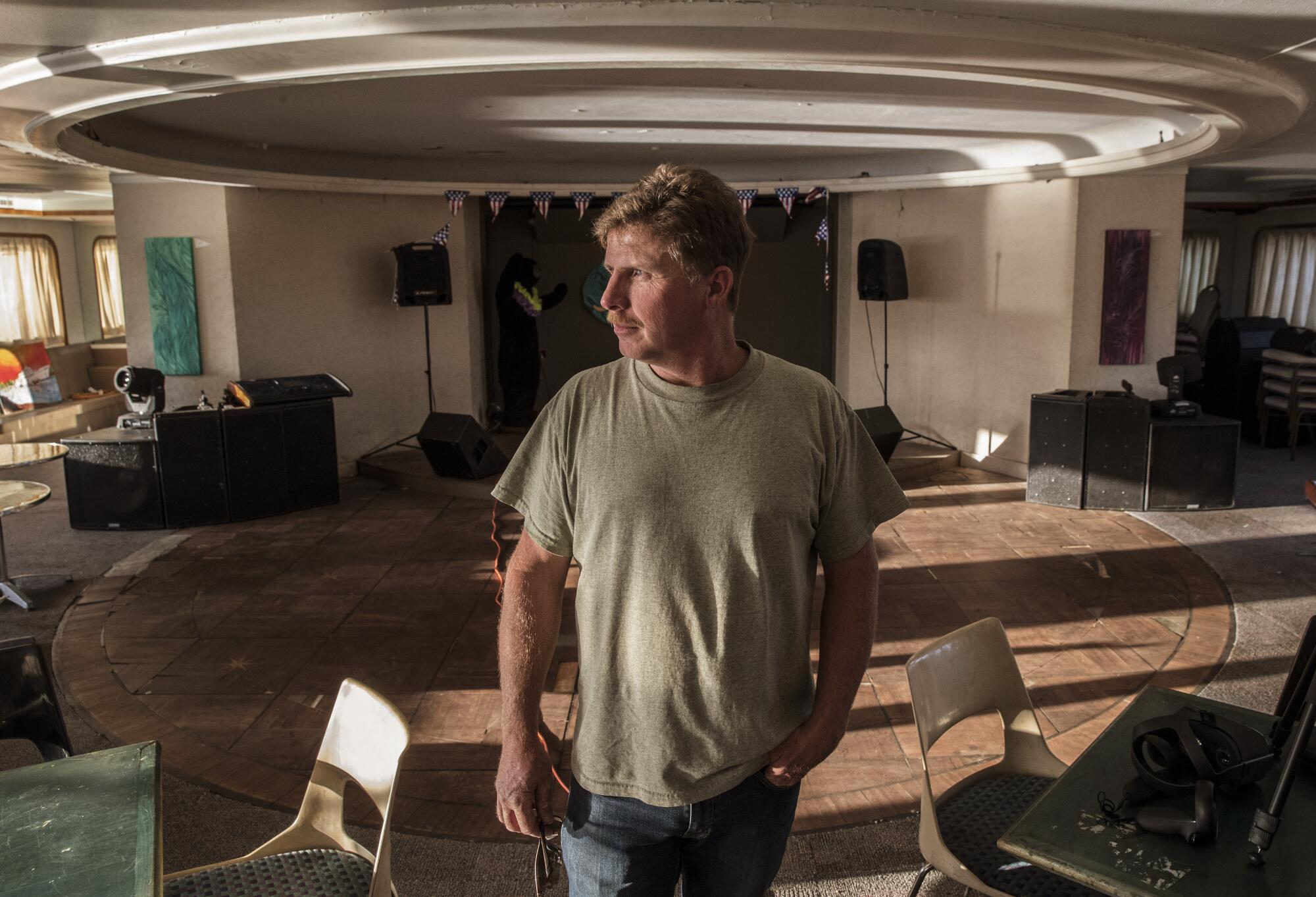
Willson bought the ship (the sum has not been revealed by either Lind or Willson.) He named her the Aurora, after the view of the sunrise from her decks.
He was the proud owner of a dilapidated luxury liner. Where on earth was he going to park her?
Lind, though he had off-loaded the ship, wanted to help solve the problem of where to put her. He needed a solution for his own vessels, the Fir and the Robert Gray, as well.
The two men persuaded officials in the small town of Rio Vista to let them lease docks at an old Army Reserve base near the town’s marina.
There were issues almost from the beginning. As Willson tells it, a caretaker living on one of the vessels went into town and broke into a home, then — pirate Jack Sparrow-style — led police on a chase straight back to the docks. Another disgruntled worker, according to Willson, went to the local newspaper and “told anyone that would listen that we were polluting and dumping sewage overboard and further we had massive amounts of water along with oil in our bilge that we were pumping out in the night.”
Willson said those allegations were false, and the furor over them was eventually resolved.
And then there was a hard economic reality: For the ship to be a commercial success, as a nightspot, wedding venue or a bed and breakfast, customers were necessary. In Rio Vista, a sleepy Delta town tucked far off the freeway, customers were few and far between.
There was, however, a place not too far off that did have lots of customers: Pier 38 in San Francisco. And as luck would have it, someone there was willing to offer Willson and Lind space. They towed their vessels south, to the City by the Bay.
It was not the happy ending everyone had envisioned. As it happened, the man who had the master lease for Pier 38 with the Port of San Francisco was in the midst of his own dispute with the port. By 2013, the Aurora was yet again in need of a home.

Eventually a place was found deeper in the Delta: Herman and Helen’s Marina on Little Potato Slough outside Stockton. Along with the Aurora, other vessels leaving Pier 38 joined in the convoy; among them were Lind’s — the Fir and the Robert Gray — and the Chaleur, a 152-foot former Canadian minesweeper.
The vision, once again, was to make money off the glamour of history, by restoring the vessels and turning the whole place into a tourist attraction bursting with bars, restaurants, hotels and wedding venues.
It didn’t take long for questions to emerge.
In 2014, a columnist from the Stockton Record was down at Herman and Helen’s, and the first line of his column did not bode well: “Let’s start with this: The Delta is a whirlpool of litigation, bureaucracy and forked tongues, which sucks honest investors’ money to Davy Jones’ Locker,” Michael Fitzgerald wrote.
In short, the marina was in trouble with county officials, for, among other things, allegedly allowing the vessels to moor there illegally, unpermitted construction of docking infrastructure and environmental violations, according to newspaper reports and allegations filed in state and federal court.
In 2016, the county filed a lawsuit against the marina owners, seeking a court order to shut down the marina, which would require the removal of the big vessels.
DDT was banned 50 years ago, but its toxic legacy continues to affect the California marine ecosystem and threaten various animal species.
Willson said he tried yet again to find a new home for the Aurora and that, this time, it proved all but impossible. He said people were “bad-mouthing” ships all over the Delta. A deal to move the Aurora to the city of Isleton collapsed, he said, in part because of such nasty talk.
Adding to the challenges, he said, heavy rains in 2017 sent silt streaming down the Sacramento and American rivers, depositing a sandbar at the mouth of the channel where the Aurora was docked. She was now officially trapped.
Willson turned to social media in an attempt to boost the ship’s chances of survival. He started a YouTube channel and a Facebook page documenting his efforts to restore the Aurora and his life living aboard a German antique. Among other things, he began selling T-shirts, with proceeds returning to the Aurora.
The Aurora went semi-viral. People came from Germany, England and all over the U.S. to join in his quest to rescue the once-mighty ship. Knego came to visit several times, enchanted by Willson and his dreams. A documentary filmmaker, Robert James, shot hours of footage for a forthcoming documentary.
But conditions in the slough were growing worse, Willson and others say. At some point, the electricity powering the big vessels was shut off. This made it more difficult for the people living on them. And, Willson said, it also meant they no longer had a power source for the emergency systems that would pump water from the hull.
In 2019, the Chaleur began to sink, leaking oil. The Coast Guard and other agencies rushed to Little Potato Slough to try to stem the pollution. They refloated the ship, but apparently not well enough: In 2021, the Chaleur sank again.
In 2023, the Mazapeta, a military tugboat from the 1940s, went down in the night, and the Coast Guard again marshaled forces. The cost for that hazardous cleanup was about $4 million.
After that, officials became even more alarmed about the accidental museum of dead ships at Little Potato Slough.
And something also broke in Willson. At 51, he said he didn’t have it in him to fight anymore. The spell the Aurora had cast over his life fell away. He completed her sale last fall, he said, shortly after the Mazapeta went down. Then he packed up his possessions, and he and his girlfriend left California.
On May 20 this year, Knego was in Northern California and decided to pay a visit to the Aurora.
“The ship looked terrible,” he recalled. A hot wind blowing through the Delta that day added to his sense of foreboding. A friend who had accompanied him was unsettled, telling him: “I want to get out of here. It’s full of bad vibes.”
Two days later, the Aurora went down.
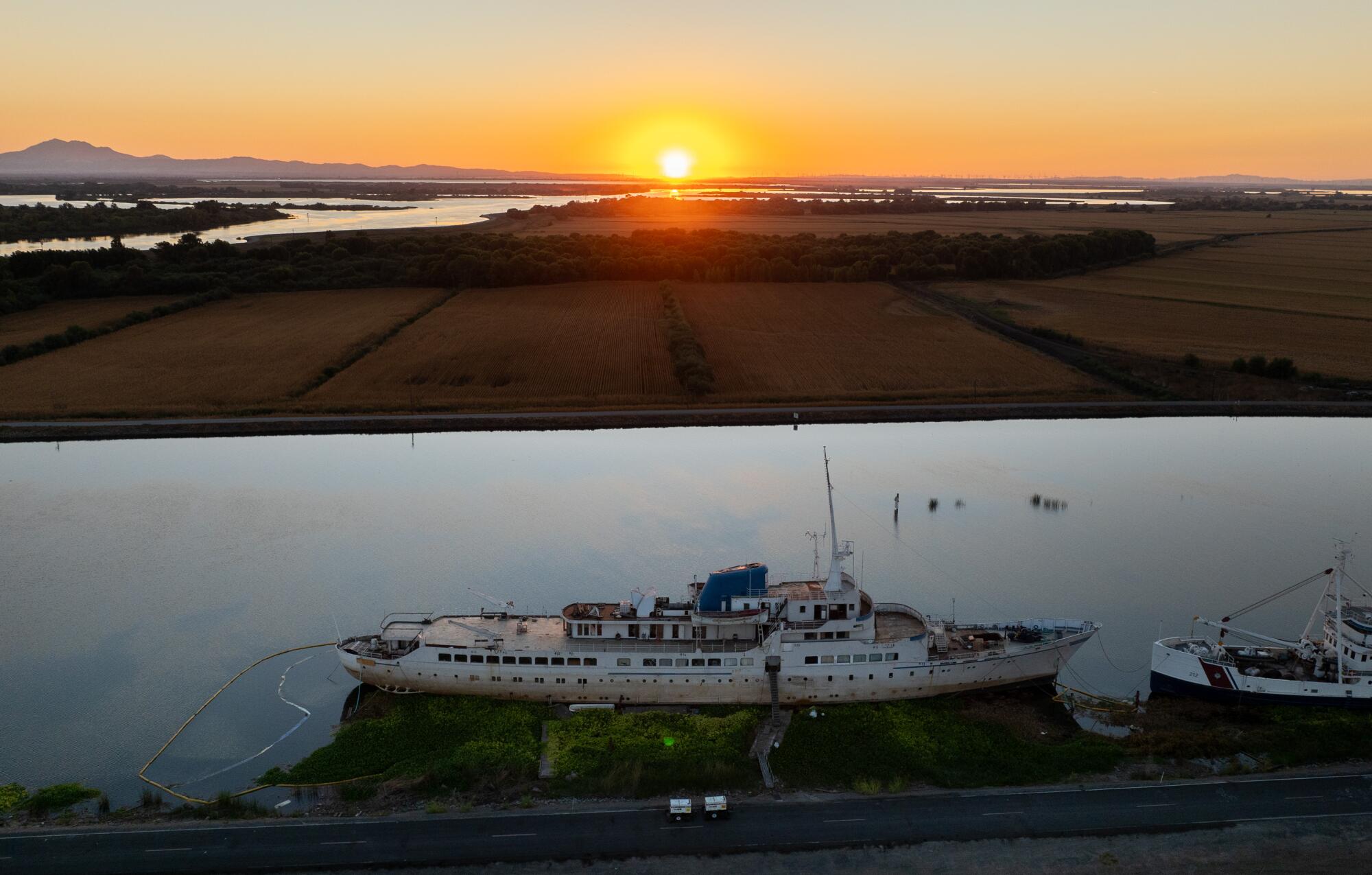
Once again, agencies rushed to Little Potato Slough with their oil booms and industrial vacuums. Cleanup took a month, and according to the Department of Fish and Wildlife, crews removed 3,000 gallons of hazardous waste and 21,000 gallons of oily water. They refloated the Aurora, to keep the ship from leaking more toxins.
In the months since the Aurora sank, officials have struggled to figure out her ownership. Willson said that’s because the new owner failed to file paperwork with the Department of Motor Vehicles, which handles “pink slips” for boats, the same way it does for cars.
In September, Willson posted a statement on the Aurora’s Facebook page that he said was from the anonymous new owner. The statement accused San Joaquin County officials of trying to dispute his ownership so they could seize the boat and scrap her. “Accidents happen,” the statement read. “I am not a criminal.” It was signed: “Undisclosed owner of the Aurora.”
A county representative said staff there are focused not on who owns the Aurora, but on how to safely dispose of the ship. Figuring out who is responsible will come later.
Willson said it had never been his intention to “dump another boat in the Delta.”
“I found it on the Delta,” he said. “It was going to sink on the Delta, and [had it stayed] where I found it, it would have been 100 times worse than it is now.”
More to Read
Sign up for This Evening's Big Stories
Catch up on the day with the 7 biggest L.A. Times stories in your inbox every weekday evening.
You may occasionally receive promotional content from the Los Angeles Times.
